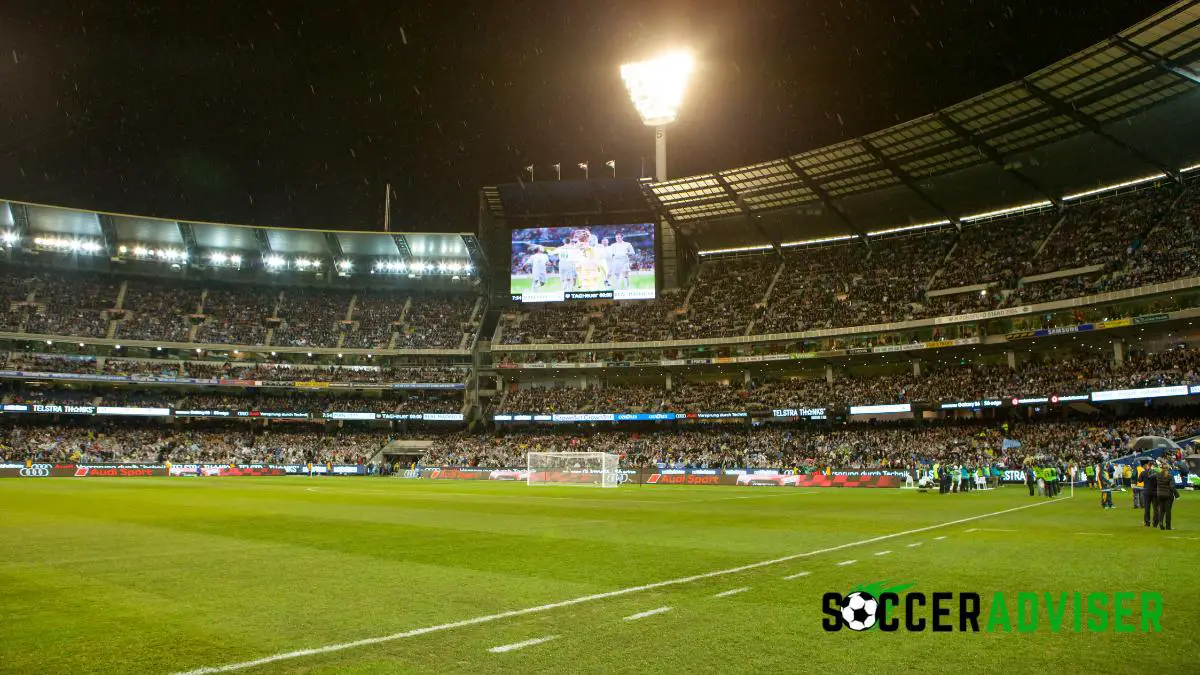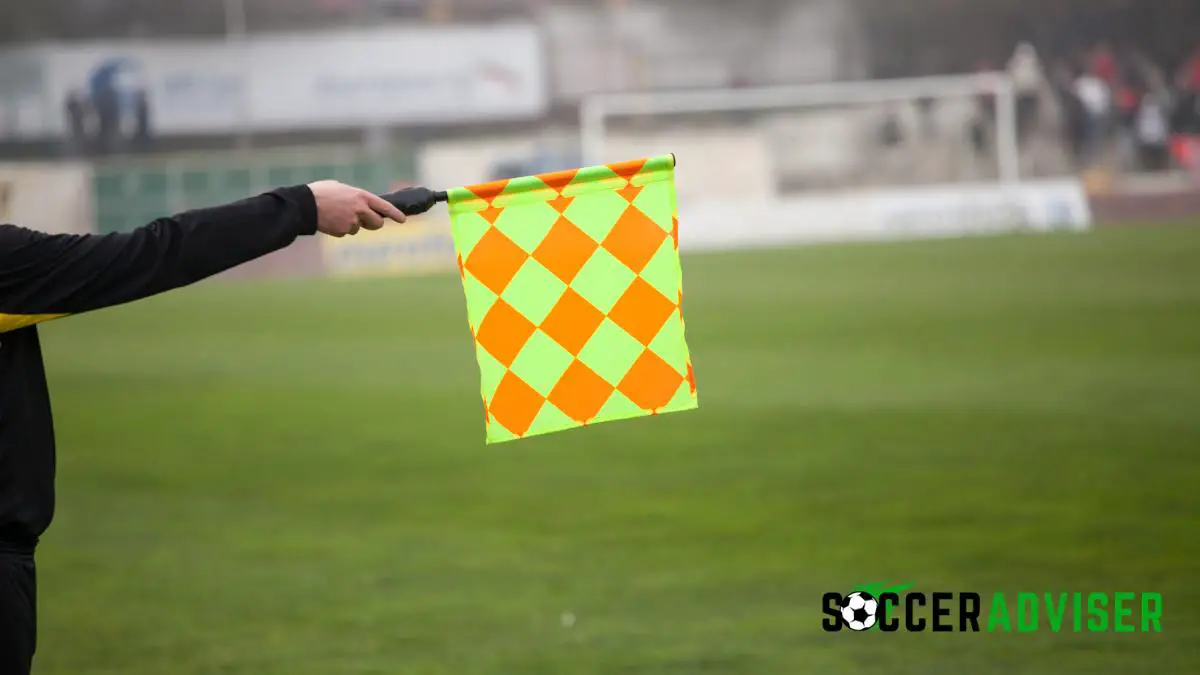Unlocking Victory: Key Soccer Rules Every Player Should Know for Optimal Game Performance

As an affiliate, we may earn from qualifying purchases. We get commissions for purchases made through links on this website. You can read more on our Affiliate Disclaimer here.
Have you ever found yourself on the pitch, ball at your feet, only to be baffled by the referee’s whistle? Frustrating, right? But don’t worry, I’m here to teach you key soccer rules every player should know for the best play.
If you want to improve and enjoy soccer more, keep reading! I’ll ll explore the ins and outs of the beautiful game so the rules can’t hold you back anymore.
The Soccer Field

To unlock victory in soccer, players must first understand the dimensions and markings of a soccer field.
A standard field, also known as a pitch, measures between 100 to 110 meters in length and 64 to 75 meters in width. The rectangular turf is divided into distinct areas with specific markings:
- Goal Area: Located at each end of the pitch, consists of two goalposts connected by a crossbar.
- Penalty Area: Extends from both sides of the goal area; encloses a penalty spot where penalty kicks are taken.
- Center Circle: Found at the middle of the field; delineates where kick-offs take place after scoring or starting new halves.
In addition to these key areas, there are other significant lines on a soccer pitch – touchlines (sidelines) running lengthwise along each side and goal lines determining out-of-bounds territory.
So when you’re gearing up for your next match, properly understanding these boundaries ensures both better gameplay and greater respect for fundamental soccer rules.
The Role of Each Player in a Soccer Team

A typical soccer team comprises eleven players who have different roles on the field:
- Goalkeeper: The only player allowed to use their hands (within their designated area); main responsibility is preventing goals.
The outfield players can be grouped into three categories:
In defense, we will find:
- Central Defenders: Primarily focused on blocking opposing forwards from scoring; they often play close to their own goalkeeper.
- Fullbacks: Positioned at the flanks, they are responsible for repelling threats from wide areas and supporting wing attackers.
In the midfield, we have:
- Defensive Midfielders: They serve as a shield in front of their defenders, breaking up opposition play and initiating counterattacks.
- Central Midfielders: These players dictate the tempo of game; distributing passes to attacking teammates while also contributing defensively.
- Attacking Midfielders/Wingers: Creatively-focused individuals who aim to assist or score goals through crosses or skillful plays on both wide and central zones.
In attack, you’ll find:
- Strikers: Considered as goal-scorers; they can either poach inside-the-box chances, create scoring opportunities themselves via skillful dribbles, and shooting on target.
Duration and Overtime: Timing in Soccer Matches

A soccer match consists of two halves that last 45 minutes each – this translates into a total playing time of 90 minutes. There’s always a break between halves lasting around 15 minutes, perfect for discussing tactics or catching your breath.
In some cases, extra time might become necessary if a winner must be decided in knockout competitions like cups or playoffs. Extra time is typically divided into two periods of 15 minutes each – bringing the overall length of play to an exhausting but exciting experience.
If after extra time there’s still no victor determined, penalty shootouts come into play where teams alternate taking kicks until one emerges triumphant.
Kick-off Rules: How to Start and Restart the Game

Each soccer match starts with a kick-off, taken from the pitch’s center circle. A coin toss typically decides which team gets to start the game or choose their preferred side of the field. The winner can select if they want first possession or pick a goal.
Well, kick-offs don’t only signal game start; they also occur after goals are scored or when commencing second half and extra time (if applicable).
Regarding key soccer rules every player should know, do keep in mind that opposing players must stay outside the center circle while awaiting kick-off.
Goal Scoring: The Key to Victory

In soccer, victory is determined by scoring more goals than your opponent within regulation 90 minutes or extended play periods (in case of ties during knockout games). For a goal to be valid:
- An entire ball’s circumference crosses completely over the line between posts and beneath crossbar.
- There should be no infringement from the attacking team leading up to it (e.g., offside positions).
Players must use any part of their body except arms/hands for making contact with the ball.
So whether you’re an attacker seeking goals or a defender thwarting opponents’ attempts – understanding proper goal-scoring ensures better gameplay understanding.
Offside Rule Explained for Improved Game Understanding

The offside rule may seem daunting at first but it actually comprises easier concepts than initially perceived. Players are in an offside position if:
- They’re nearer to the opponents’ goal line than both ball and second-to-last defender when it’s played through by teammate.
In other words- they’d have fewer than two rival players between themselves and the goal, excluding the goalkeeper.
To avoid confusion- let’s remember that players in an offside position will not be penalized unless they are actively involved during the game (e.g., gain an advantage).





